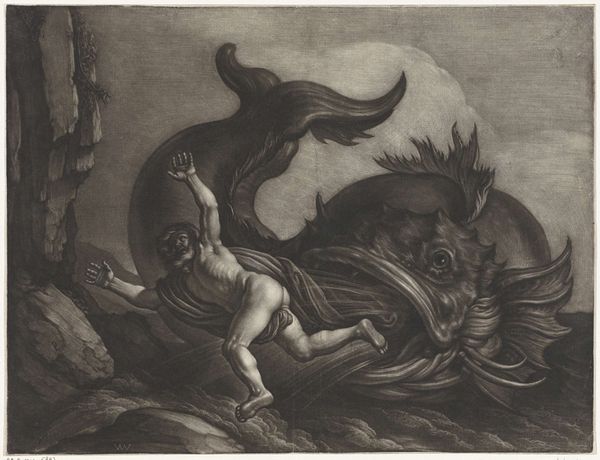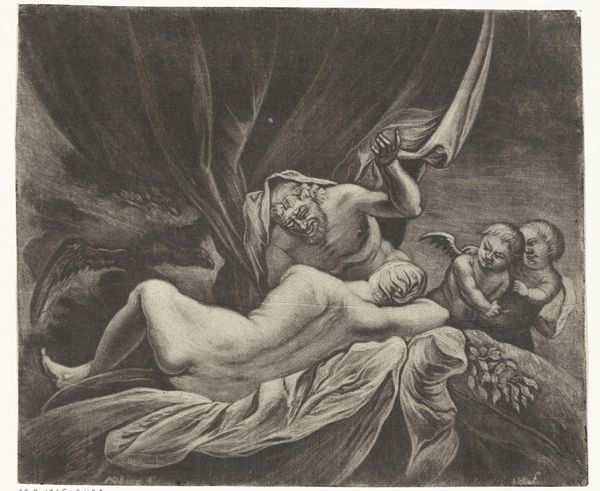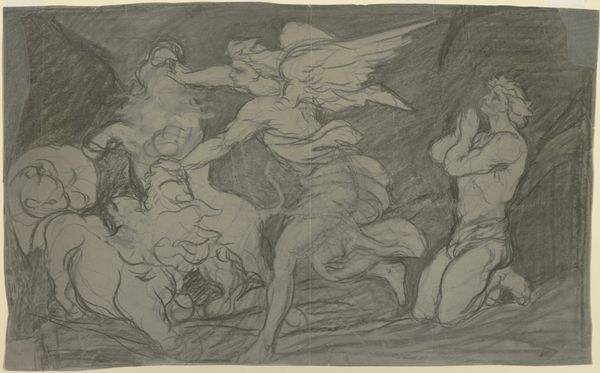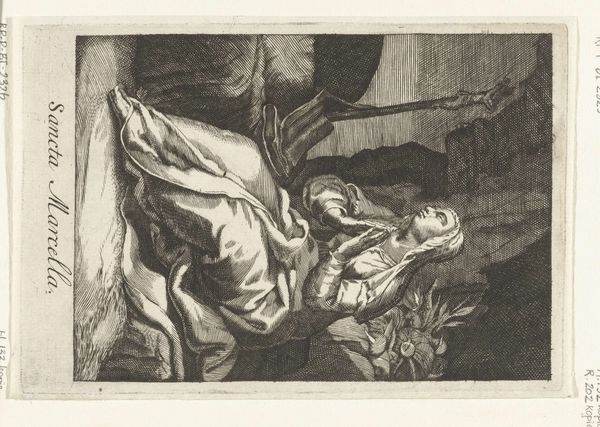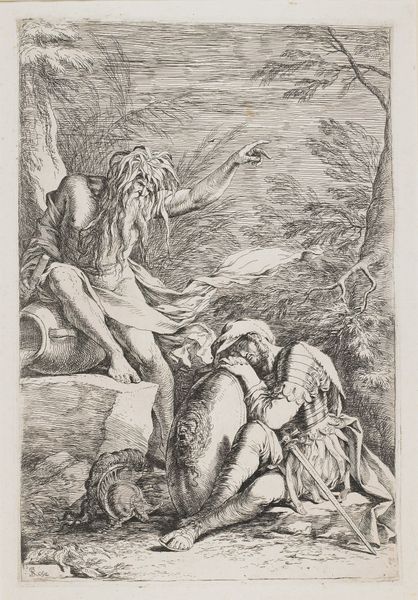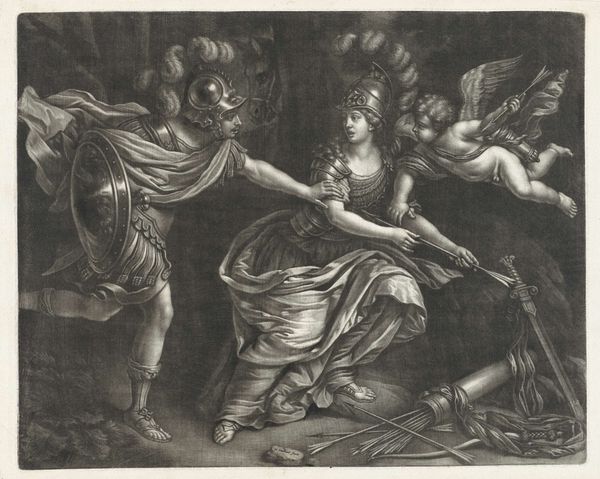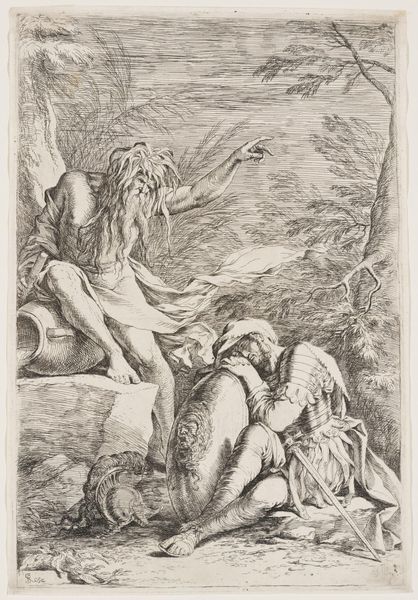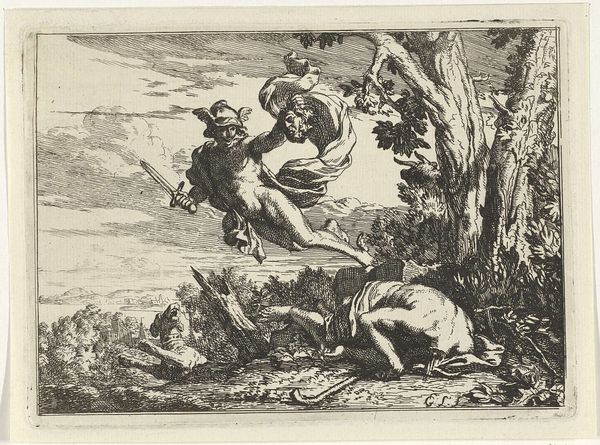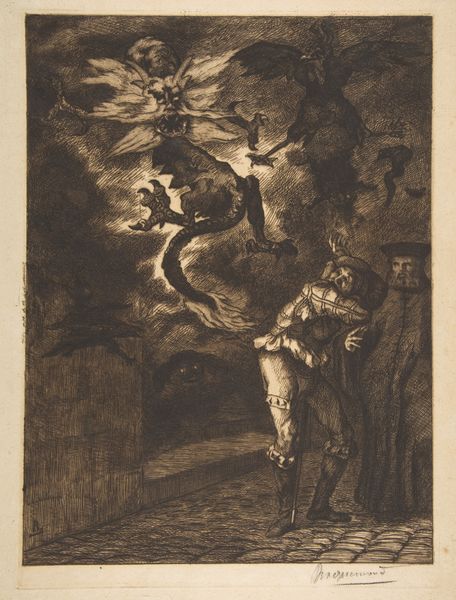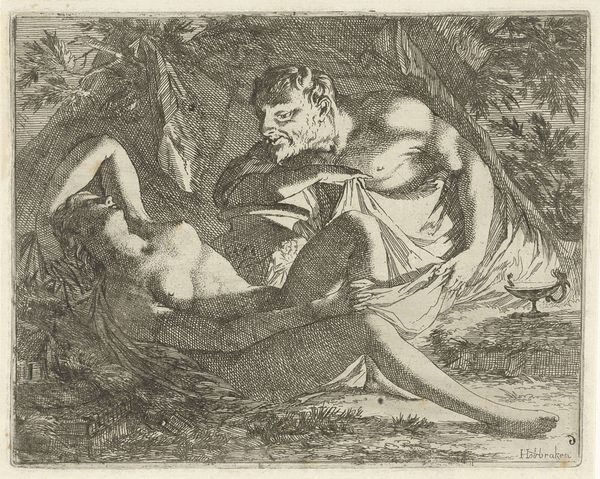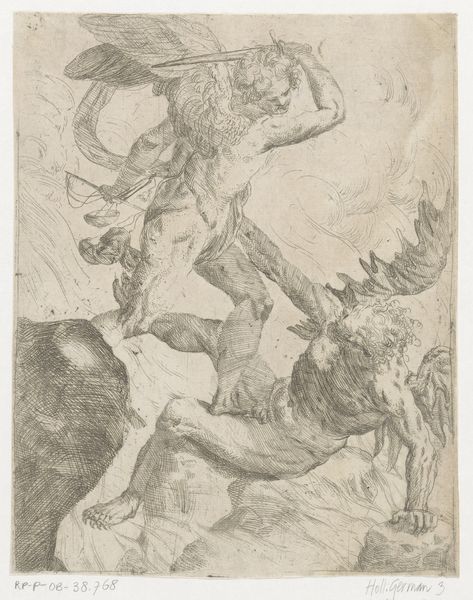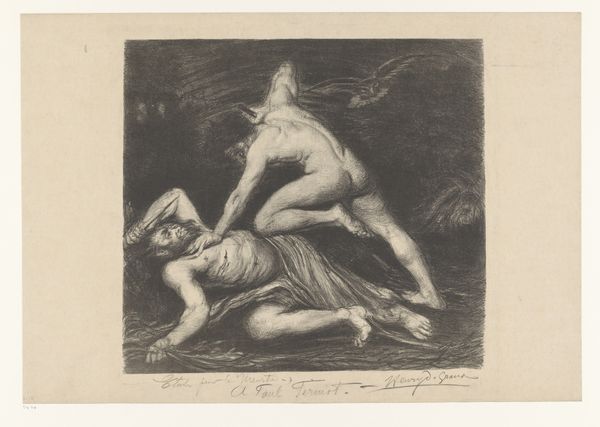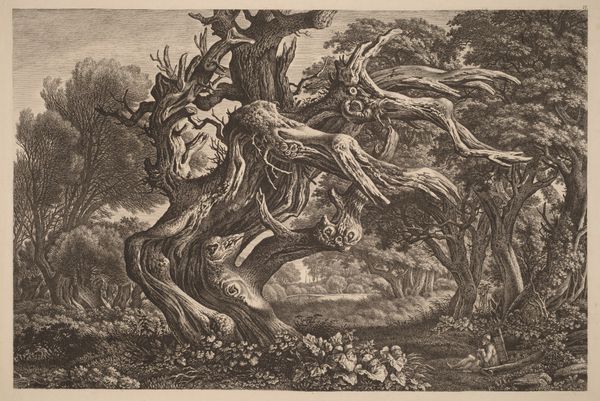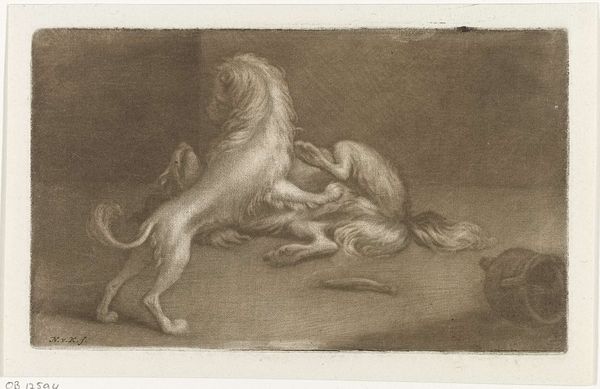
drawing, charcoal
#
drawing
#
baroque
#
animal
#
dog
#
landscape
#
charcoal drawing
#
figuration
#
charcoal
Dimensions: height 139 mm, width 154 mm
Copyright: Rijks Museum: Open Domain
Pieter Pickaert's "Rennende Hond," made around the late 17th to early 18th century, captures a dog in full stride, a burst of energy rendered in ink. The image of the running dog itself is rich with symbolism. Since antiquity, dogs have been emblems of loyalty, protection, and the hunt. Here, the dog's posture, head raised and body stretched, speaks of instinct and primal drive. We recall similar depictions across millennia, from the hunting dogs of ancient Egyptian art to the hounds in Renaissance tapestries. Consider how such depictions evolve: in some contexts, the dog symbolizes vigilance, in others, pure animalistic energy. The psychological weight of this symbol is profound. The dog represents a connection to our own instincts and an echo of humanity's long partnership with animals. In Pickaert's etching, the dog’s dynamism may subconsciously evoke the vitality and untamed aspects of the natural world, reminding us of the cyclical progression where primal instincts are perpetually reinterpreted across cultures.
Comments
No comments
Be the first to comment and join the conversation on the ultimate creative platform.
